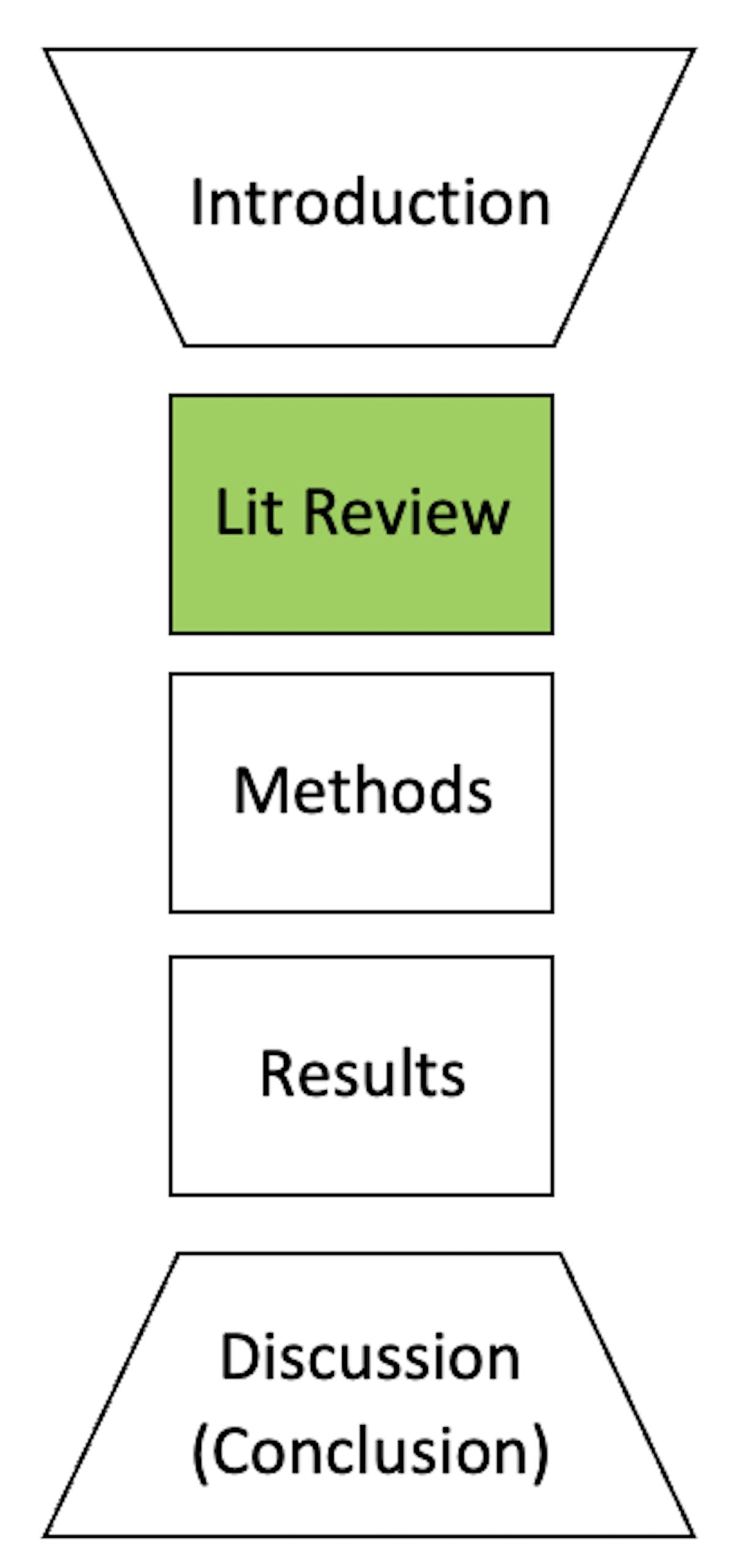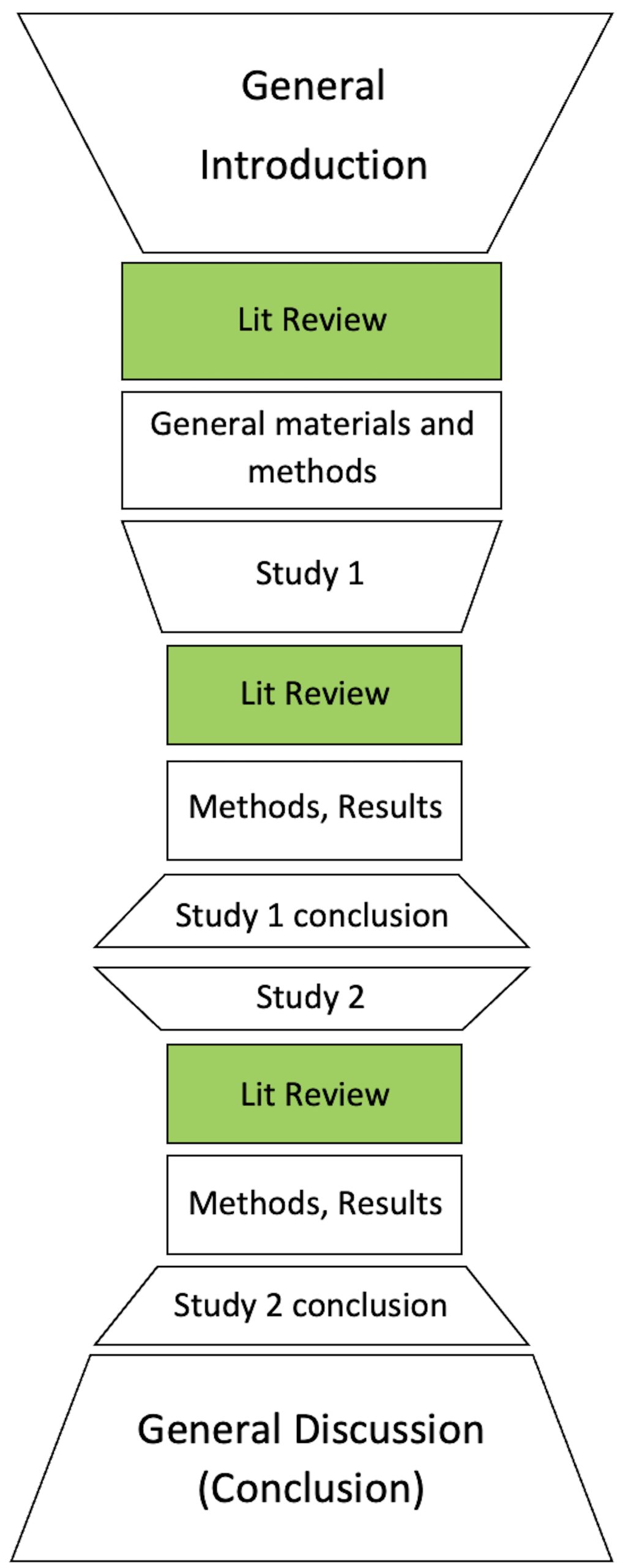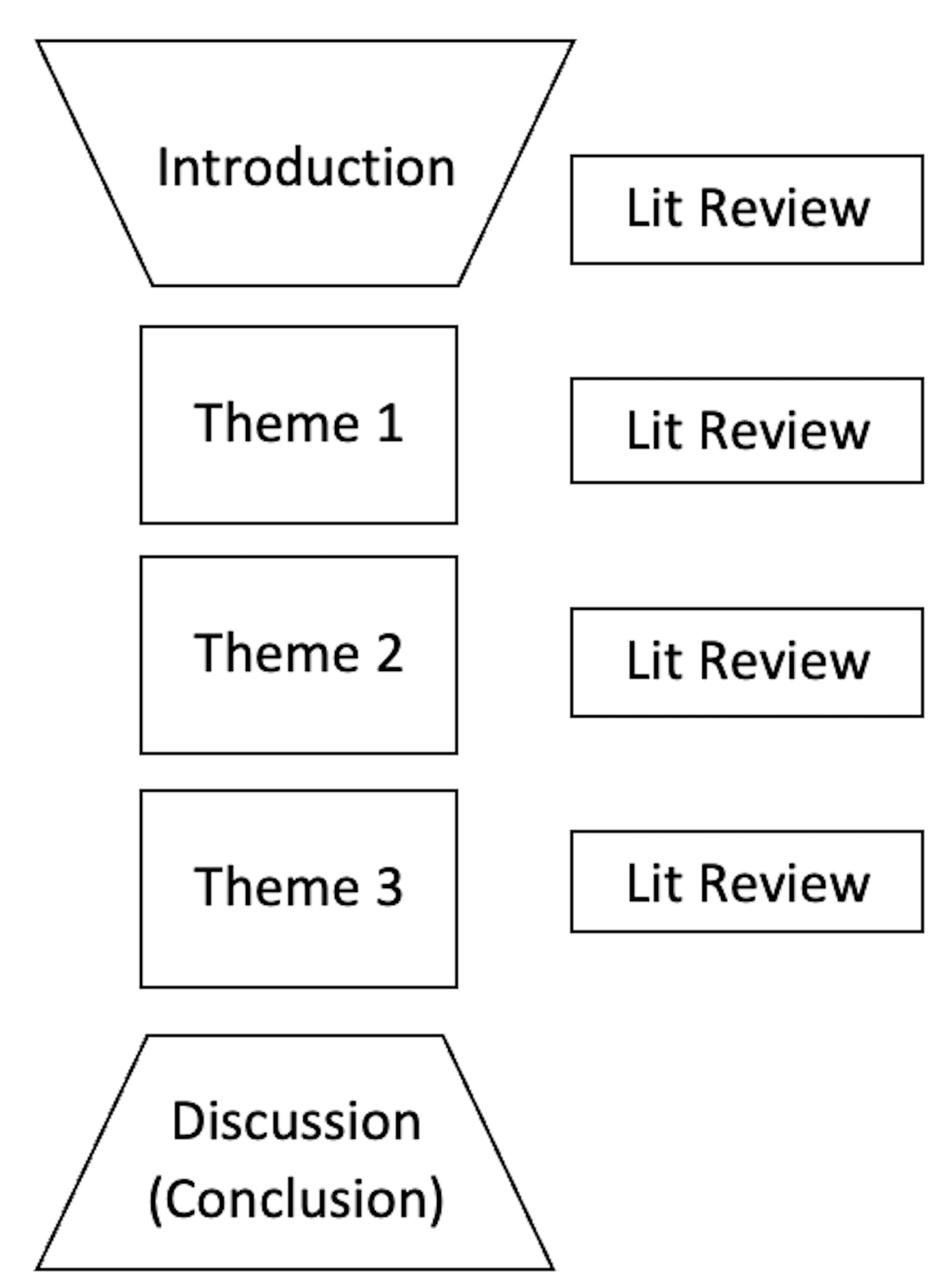Structuring your literature review

In this section, you will learn about structuring your literature review. You will find information on where to include the literature review in the overall structure of your thesis as well as how to structure your ideas and arguments within the literature review itself.
Where to place your literature review in your thesis?
While you are likely to refer to the literature throughout the thesis (e.g. when providing a rationale for the study, justifying your methodology, or linking your discussion back to the literature), remember that the literature review performs a specific function, which we saw in the section on the purposes of the literature review, and therefore usually appears as a unified and substantial section or chapter.
Accordingly, where you locate your literature review within your thesis depends on the structure of your thesis. Your thesis might follow one of the following three typical structures:
- Traditional
- Traditional complex
- Thematic based
Traditional thesis structure
 A traditional thesis reports on a single study.
A traditional thesis reports on a single study.
Usually, in a traditional thesis, the literature review is a standalone chapter:
- Introduction
- Literature review
- Methods
- Results and analysis
- Discussion and conclusions
(Graphic adapted from Paltridge, B. (2002), ‘Thesis and dissertation writing: An examination of published advice and actual practice’, English for Specific Purposes, 21: 125–43.)
Traditional complex thesis structure
 A traditional complex thesis reports on more than one study. Within this structure, there is usually an overall literature review, and then a smaller literature review associated with each study.
A traditional complex thesis reports on more than one study. Within this structure, there is usually an overall literature review, and then a smaller literature review associated with each study.
- Introduction
- Main literature review
- General methods
- Study one introduction
- Study one literature review
- Methods
- Results and analysis
- Discussion and conclusions
- Study two introduction
- Study two literature review
- Methods
- Results and analysis
- Discussion and conclusions
- General discussion and conclusion
(Graphic adapted from Paltridge, B. (2002), ‘Thesis and dissertation writing: An examination of published advice and actual practice’, English for Specific Purposes, 21: 125–43.)
Thematic based thesis structure
 A thematic based thesis has its content organised according to themes. Within this structure, there is usually a literature review for each themed chapter.
A thematic based thesis has its content organised according to themes. Within this structure, there is usually a literature review for each themed chapter.
- Introduction
- Theme 1 – includes a literature review related to the theme
- Theme 2 – includes a literature review related to the theme
- Theme 3 – includes a literature review related to the theme
- Discussion and conclusion
(Graphic adapted from Paltridge, B. (2002), ‘Thesis and dissertation writing: An examination of published advice and actual practice’, English for Specific Purposes, 21: 125–43.)
To summarise, depending on the overall structure you choose for your thesis, the section you call your literature review may form:
- a discrete chapter (e.g. traditional thesis)
- different sections distributed among other thematically-based chapters (e.g. topic-based thesis)
- a combination of the above (e.g. traditional complex thesis)
Reflection
What overall structure do you think your thesis will take?
Where will your literature review appear as a result of this overall structure?
The internal structure of the literature review
An effective literature review usually observes the following structure:
- Introduction
- Introduce the problem and the context
- Summarise key trends, themes, areas of controversy and the gap(s) in the literature
- Outline the organisation of the body and indicate the scope of the literature review.
- Body
- Highlight the development of major concepts/themese and influential studies.
- Focus on areas of agreement, modification of design, tensions and inadequacies as you gradually narrow the focus to studies closest to your own
- Identify the GAP where your research fits. (Note that identifying a gap is critical in a literature review as it justifies or provides an argument for the need for your research).
- Sum up the major themes that you have reviewed and link to your research
- Conclusion
- Summarise major contributions
- Point out gaps or issues to be investigated
- Relate the literature review to your research question or problem

